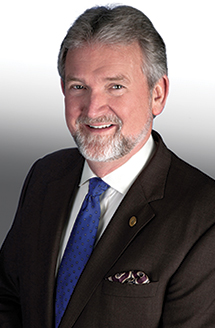
Dr. Herbek
The CAP Council on Public Affairs launched See, Test & Treat 14 years ago, when National Cancer Registry statistics showed that Native American women in the Great Plains region were 1.6 times more likely to die of cervical cancer than U.S. women of other races. Fifty years after the Pap test was introduced, National Institutes of Health and Indian Health Service numbers for 1999 and 2000 indicated that only 20.8 percent of Native American women from the Standing Rock Reservation in McLaughlin, SD—versus 64 percent of all adult women in the U.S.—had been screened for cervical cancer. And more generally, 80 percent of the Native American women of Standing Rock who required any sort of medical follow-up care never received it due to barriers tied to culture, communication, transportation, and family responsibilities.
So we reached out to physicians, nurses, and officials of the local Indian Health Service office. We met with tribal leaders, state legislators, and other physicians who served these and similar populations. We learned a lot. See, Test & Treat grew apace, embraced more underserved populations, and grew some more. Between January 2012 and July 2015, 2,021 women were screened at 22 See, Test & Treat programs, and another five programs are scheduled for the balance of 2015.
At a See, Test & Treat program, women receive a free pelvic and clinical breast exam with same-day Pap test results and timely mammogram results, and they transition to follow-up care in their community health systems. HPV testing, colposcopy, cervical biopsies, and fine-needle aspiration are likely to be provided on site as well. Many hosts offer additional services, such as screening for sickle cell anemia, thyroid disease, and proteinuria. Every site offers one-on-one counseling sessions with insurance marketplace navigators to connect women and their families to routine health care. Patients and their families are invited to sit at a two-headed microscope with a pathologist who shows them healthy and unhealthy cervical cells while describing the diagnostic process.
Family members are welcome and children’s activities are provided. Everyone enjoys a nutritious breakfast and lunch. From Minnesota to Rhode Island, Texas to California, these CAP Foundation events create a welcoming setting that encourages patient empowerment and demystifies the health care system.
Barbarajean Magnani, PhD, MD, who has coordinated five See, Test & Treat programs, will never forget the day she was assigned to give patients their results. An on-site interpreter enabled a real conversation for those who wanted to learn more, Dr. Magnani says. More than one patient gave her a hug. “That,” she says, “is something you don’t normally get as a pathologist.”
This year, we expect to hold 11 See, Test & Treat events led by pathologists and staffed entirely by volunteers. As always, gynecologists, radiologists, internists, cytotechnologists, nurses, nutritionists, mammography technicians, and community members will join us in an inspiring team effort. All day long, they will collaborate to provide much-needed care, answers, resources, and respect to women whose lives are structured around taking care of everyone else.
As Jennifer Hunt, MD, a former president of the CAP Foundation Board of Directors, has said, See, Test & Treat is a way for pathologists to more publicly make a real difference in women’s lives and demonstrate we are more than the doctor’s doctor. We are every patient’s doctor. Lewis A. Hassell, MD, also a former Foundation Board president, says when pathologists are seen taking on leadership roles for a good cause, the dynamic that drives all of their day-to-day professional relationships undergoes a healthy shift.
In weighing a donation to the CAP Foundation, please consider that the proportion of participating members is a critical metric in obtaining external funding. Member contributions show our collective commitment and are in no small part responsible for the significant momentum we’ve enjoyed since the CAP Foundation made See, Test & Treat its signature program in 2012.
We continue to pursue the funds we need to do more and to explore partnerships with industry leaders, who have always provided financial support, test kits, reagents, and equipment to make these programs possible. I am looking forward to a See, Test & Treat at the Charles Drew Health Center in my hometown of Omaha in June 2016. A team from Becton, Dickinson and Company attended our first planning meeting a few months ago and has committed substantial financial support over the next two years.
The Robert Wood Johnson Foundation recently funded an independent assessment of See, Test & Treat by Bruce D. Rapkin, PhD, Department of Epidemiology and Population Health, Albert Einstein College of Medicine in New York. Dr. Rapkin’s report offers a fine-mesh look at the business side of See, Test & Treat and makes it clear that we know how to collaborate and think creatively without compromising best practices. We look forward to putting his advice to work as we continue to explore ways to help underserved patients more fully engage with the health care system.
The night before our first event at Standing Rock, a tribal elder blessed our team with a Native American prayer that recollects the circle of life. It was a pitch-perfect moment that stays with me to this day; I felt that she saw our truth. Medical and scientific excellence is what we are known for, but See, Test & Treat shows what is in our hearts. As Jennifer Laudadio, MD, president of the CAP Foundation Board of Directors says, See, Test & Treat makes her proud to be a pathologist. Me too, Jennifer. Me too.
[hr]
Dr. Herbek welcomes communication from CAP members. Write to him at president@cap.org.
![]()
 CAP TODAY Pathology/Laboratory Medicine/Laboratory Management
CAP TODAY Pathology/Laboratory Medicine/Laboratory Management
